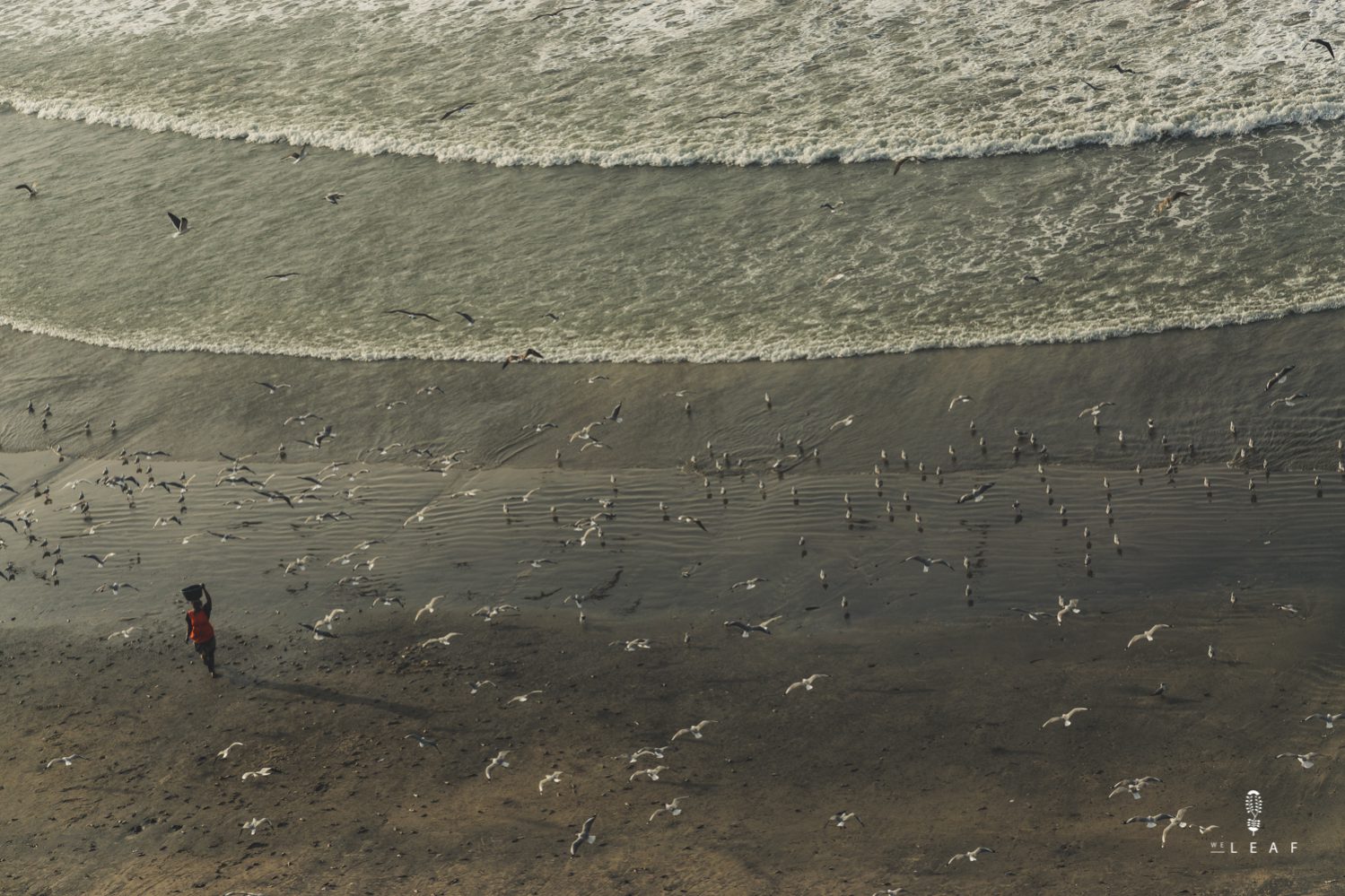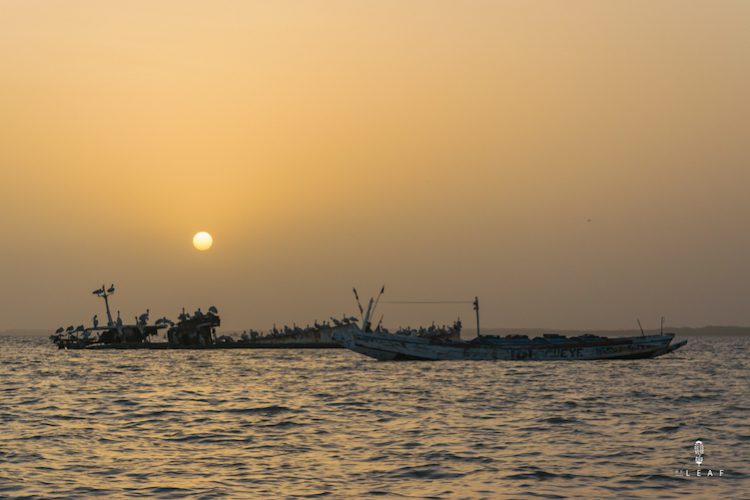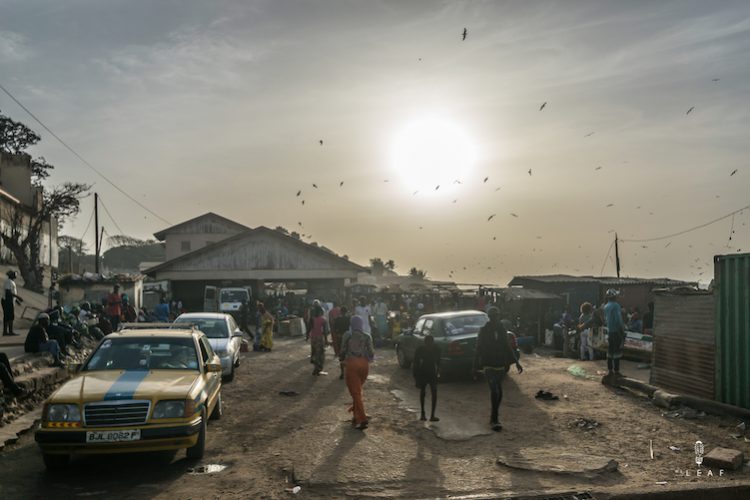
Rohey Dubois
April 20, 2017
Inside Gambia
April 30, 2017March 12th - Half Die
With the burning African sun on our face we are sailing into the estuary of river Gambia. The estuary is so wide that only one shore is visible. Simple fisherman houses are standing peacefully on the beach. Colourful wooden fishing boats are laying in front of the houses, half om them on the beach, the other half bobbing at the coast. Life passes by as we are floating past, just if we are watching a piece of theater and sailing to the next scene. A small boat is approaching us and shows us a place to throw the anchor, accompanied with a big smile and the inviting words “Welcome to the smiling coast of Africa! Welcome to Gambia!”. The last four days the sea was extremely calm. Even Olivier enjoyed the sailing. In his mind he doesn’t get of the boat anymore, but this does not ensure a seasick free crossing.
The first day we moor the dinghy early in the morning at the fishermen jetty. Everybody has to join to the immigration office to avoid a visit and inspection on board. This even outweighs leaving the boat alone in the harbour, where we are the only sailing boat. Our local guide of the day, Mo, leads us around the different offices. Banjul is the capital of The Gambia, but it doesn’t appear like that. With the dusty, unpaved roads, packed with trucks coming out the harbour and the low rise buildings it looks more like a country town. Until the immigration office everything goes smoothly. We get a stamp in our passport for 21 days and count that the big crossing will start on the 4th of April. Moments later we go inside the next office. The head of the customs has somethings corrupt on his face, a nasty smile, one that supposes he is not playing the game fairly. With the stamp on the declaration form he walks to Dieter and Margrit. No inspection, everything seems fine, but then he asks “Do you have a present for me?”, and he whistles that it could be a very tough day for the captain if he doesn’t has one. Dieter and Margrit are missing the experience with those kind of games and are a sitting duck. Quickly they give him a fair amount of money, and even return in the afternoon to give some more when they see the corrupt officer shouting at the corner of the straat and winking “don’t forget me”. We can only watch with disbelief. Eight hours later we get back into the dinghy, exhausted, but with all the necessary documents.
The anchorage in the harbour of Banjul is not a place to stay for a long time. Banjul isn’t inspiring, the strong tidal currents and all the fisher boats make us move quickly to a more peaceful place. On our way to the Lamin Lodge we take one of the branches of the river, a bolon, being wider then the Meuse. The shores are covered with mangrove forest, which is the perfect coastal protection and breeding ground for birds. Gambia is, next to the beach tourism, well known as a bird paradise. Everyday we spot new species and even the pigeons make a remarkable pretty sound. In the wide bolon there is only a small navigable gully and the sand banks sometimes changes their place. We get stuck two times and push the engine to the limit the move out of the sand. With some more ingenuity of maps this shouldn’t be necessary, but our dreamy captain gets a little forgetful at his age. The Lamin Lodge is well hidden on an idyllic place inside the bolon. The name ‘lodge’ is a little overrated for the state being of the wooden construction, but rustic and authentic it is a beautiful place. Surprisingly the bolon is full with other sailing boats, but almost all of them are here for a very long time.
Around the different mangroves we see various wooden canoes, pirogues, with women collecting oysters. A heavy labour with the strong currents in places that are hard to reach. Everyday with low tide they paddle in their rickety boats into the mangroves to collect the oysters. Most of the women come from far away and work in the same bolon for a period of nine months. Each day they collect five to six big buckets full of oysters and they are gathered on big piles on the beach. They don’t eat the oysters like we are used to, sipping them inwards. Here they cook the oysters and they sell the content on the local market. The shelves are burned to make a white powder, which they use to make as paint or the base for cement. It is one of the last remaining crafts in those small villages by the water. In the past they were vibrant trading centres, but the construction of roads shifted those trades to this quicker mode of transport.
After many days packed together on the boat we need some private time. We spent a couple of days in the region around the Atlantic Coast before we continue sailing on the river. Starting from the Lamin Lodge the dirt road passes the village Lamin. Simple house with dusty streets are surrounded by a massive amount of mango trees, which are, unfortunately for us, not ripe yet. Within two months they will fall with heaps out of the tree and a feast will start, because to conserve the mangos, they don’t have the right cooling technique. Together with the mango trees come the cashew nuts which are planted in various orchards. At the end of the rain season there is an overload of oranges, but the main export product is ground nut or peanut. Dreaming about the ripe mangos we wander around in the village and stop at one the very well hidden shops. Behing a window made of chicken netting sits a vendor in between his packed merchandise. Almost all of the products are long lasting, but the main products people buy are sweets, a sigaret of tapalapa, the only fresh thing in the shop. It is the name of the french bread dat is spread with egg, potato, beans, chicken or fish and seasoned with jumbo, crumbled broth cube. There is no better breakfast or lunch.
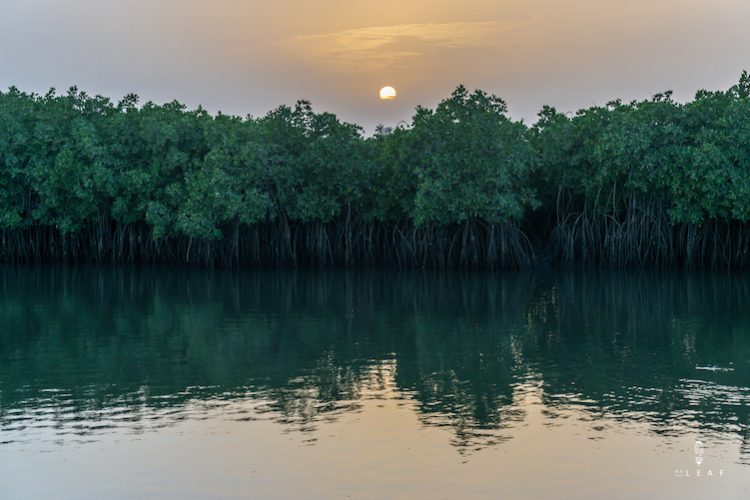
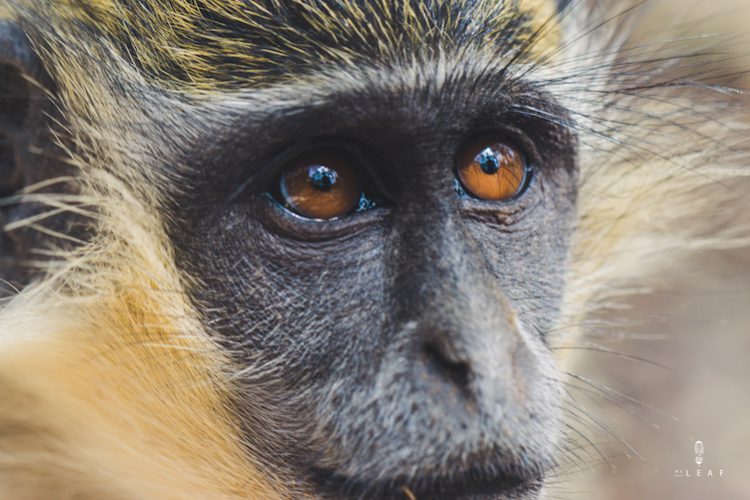
The troublous times after the presidential election has gone. The people are happy with the new president and talk freely about the changes and how bad everything was before. Something which was impossible under the regime of the former president. Walls, t-shirts and posters are signed with the words #Gambiahasdecided. Everybody is optimistic about the future of the Gambia and is happy that the tourists return. “Hello my friend. How are you? What is your name? Which country?” are the opening questions and then it is hard to get rid of the Gambian who wants to offer his services. The little children copied those sentences perfectly, although they don’t ask for money, but for a football or a mynté, but any candy is fine. Whatever your response is, the smile and “welcome, welcome” is always the response.
Once we reach the main road, the sparkling African life starts. Noisy mini busses slalom between the cyclists and donkey carts. They shout the names of destinations and squeeze the busses full for that extra twenty Dalasi. Along the road the street is covered with colourful stores and workshops. The local speciality is painted on the walls, serving as advertisement and every fifty meters they sell the same craft. The women are selling the fruits, men do the dressmaking. There is an abundance of bike shops and we are surprised about the large amount of retro bicycles that are worth a fortune in the Netherlands. The unemployment may be enormous in Gambia, in the unofficial circuit everybody does something. When we come closer to Serrekunde, de biggest city in Gambia, the chaos starts. Busses and taxis try to squeeze through the packed streets which are filled with countless colours. A incessantly noise arises from the streets while every vendor accosts you to his merchandise. This flooding of impressions cost a lot of energy. One hour later we close the door of a well hidden guesthouse with whistling ears. Relief!
The cold shower feels as an enormous gratification. The wet drops wipe away four weeks of salty air and sweat. When the drops reach our toes, they are brown and saturated with dirt. The stiff hairs become soft again and a new skins appears at the surface. Four weeks without showering definitely is a new record and hopefully we won’t break it soon. Freshly washed we return to the chaos. The public transport works different than in Cape Verde so it takes some time to find the right bus. Our destination, however every tourist guide recommend it, doesn’t appear to be common. The Bijilo Monkey Park bears the signs of a heavy political twist. The ministry of environment and wildlife was able to prevent the construction of a huge hotel resort at the very last moment. At different locations in the park the trees are already removed and the trails look diluted. The big sign at the entrance of the park says ‘Please don’t feed the monkeys’. Once we pass the sign a local guide asks us if we want to buy some nuts to give to the monkeys, because this is part of the visit. Surprised we read the sign again and have a useless discussion with the guide. Two weeks later we talk with the secretary general of the minister of environment. The Bijilo Monkey Park is one of their priorities, but feeding the monkeys is, also for him, part of the fun.
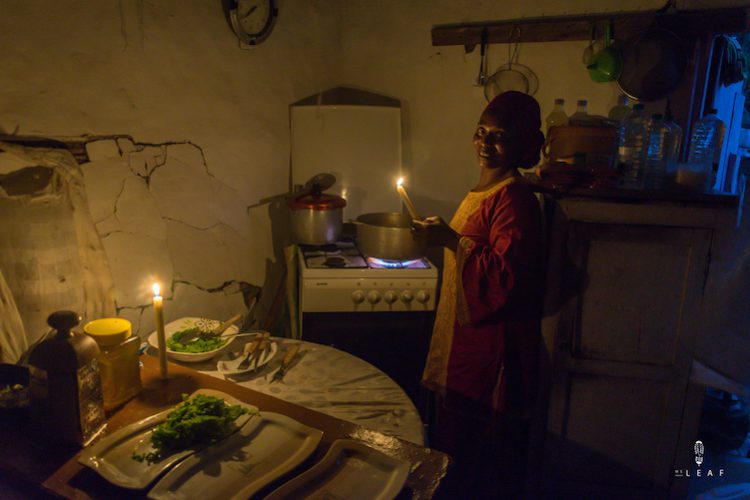
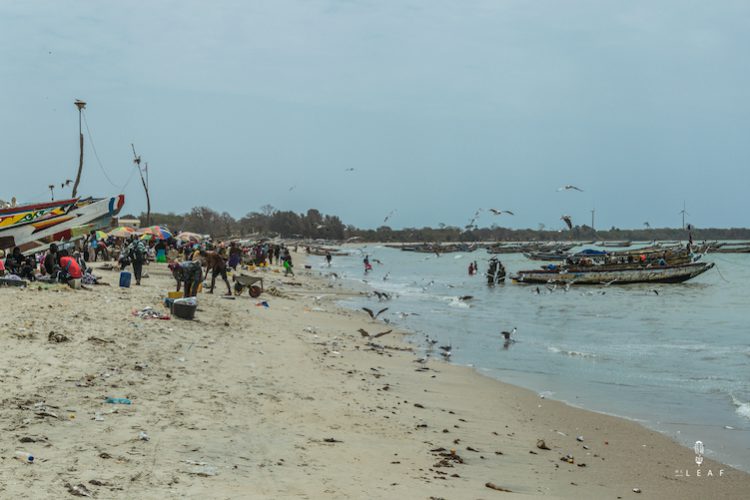
A major part of the coast in Gambia is packed with luxury resorts where Western tourists winter at the beach. More to the south the authentic fishing villages still survive. At first sight Tanji looks like a dusty transfer point for mini busses, but two steps in the direction of the beach show another world, rich in colours and all the stages of a fish life. The beach is covered with beautifully decorated fishing boats. They all are handmade and cost a fortune for a Gambian. Mostly it are rich Gambians who lease their boat and claim a big part of the yield. The scenery at the beach is like a living canvas. You can spent hours watching at every single detail. On the water they bring in the fresh fish, the large groups of seagulls tracing the by-cast, sleeping fishermen laying under their boat on the beach or the collection of old fridges stuffed with the latest fish. A fair amount of the freshly caught fish is smoked on big fires and sold to many neighbouring countries. The wast is collected in big buckets and end on the dumping ground, ready to become compost. Vultures scrabble in between the fish waste, just like the chickens in our gardens. An unconceivable scenery, but nothing special for the local man. The smell is intense and exceedingly penetrant. The stench of rotten fish sits deep into our clothes when we arrive in the guesthouse in the evening. Three days later we still can smell the stench and are ashamed every time we enter a place.
Searching for a place to eat, we find a small restaurant. The owner, Rohey, works using a very special concept. Quickly she takes her shopping bag and takes us to the fishing harbour and the local market. We buy all the ingredients and pay the vendors when Rohey says “Give her twenty Dalasi”. When the bag is filled we return to the restaurant and Rohey starts to prepare a feast with a candle in her hands. At other places you can eat a traditional Gambian dish for less then one euro. (Portrait Rohey). They usually call it ‘fastfood’ which literally means quick, and not unhealthy. Hygienic is reacts against every basis travel advice, but more local than this you can’t find. We only leave the head of the fish that is usually on the plate. The most common dishes are Domoda, rice with peanut sauce, Yassa, rice with mustard sause and Bechakin, rice with tomato sauce. Mo already assured us that a day without rice does not exist for a Gambian. Well rested and with plenty of rice in our stomach we return to the boat and get ready for the sailing trip on the river, a trip that brings something different than expected...


